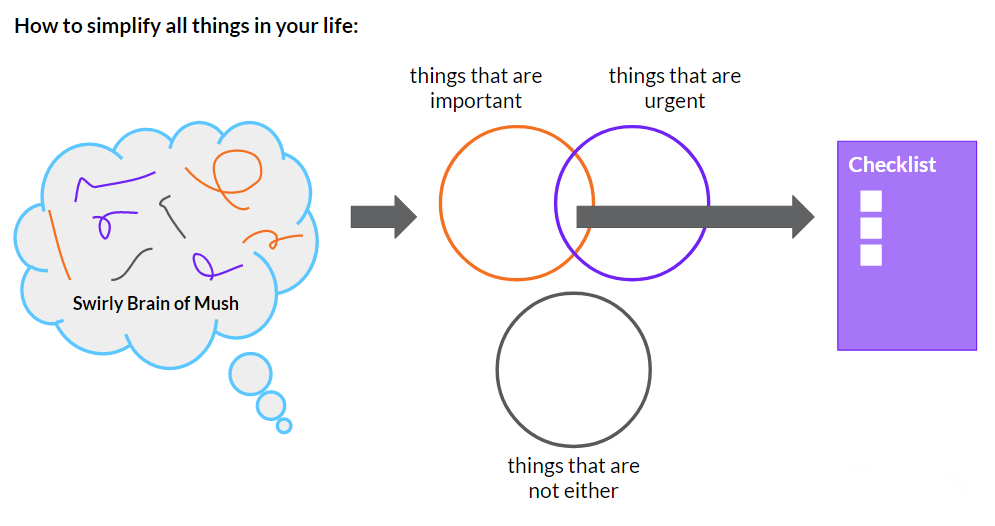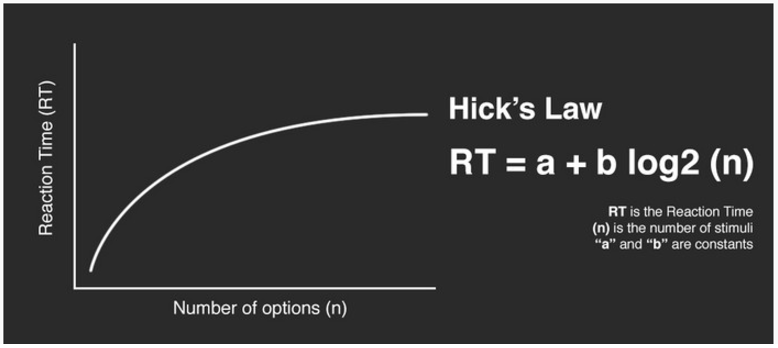Last week we wrote about accelerating decision making by improving consensus, knowing your exit criteria, and avoiding analysis paralysis. This week, we’re getting down to the nitty-gritty on how simplicity can drive decision making everywhere.
Hick’s Law
(About the Hick-Hyman Law, 1952)
A scientific concept exists that will make complete sense to you: response time goes up with the number of options. In other words: more options = more time it takes to make a decision. No brainer, right?
Wrong! In our collective effort to give users the best web experience, highlight our cooking talent, or a sales guy that ‘has everything for everyone,’ this concept of minimizing options is often completely neglected.
Even if you’re not a UX designer, a chef, or a sales guy, Hick’s Law has real life application in simplifying decision making. I’m talking about your everyday decisions, like helping your kid to get dressed in the morning or shopping for a Mother’s Day gift. The list is endless.
Here are a few tips to help you simplify decision making in your everyday life:
1. Categorize
The best way to avoid decision making overload is to start at the top of the organizational chart and categorize. UX designers do this when they decide on website navigation. They decide what they’d like users to do first, and what high-level categories make sense to present. You probably already do this when deciding on dinner: first, decide if you feel like Chinese, Italian, or Mexican before moving on to the actual restaurant. Or even higher up on our categorical list: stay in and cook, order in, or go out? Chipotle Online Ordering does this well: they categorize their high-level options into pictures (think: burrito or salad), and the reaction time on my end ordering is noticeably reduced.
For our Mother’s Day example, deciding first on a cute mug or ordering flowers reduces the aimless Amazon wandering. For getting kiddos dressed, this can be as easy as giving them only two options at a time: green socks or blue socks today? Notice we’ve also obscured complexity by not saying they can go sockless?
2. Obscure Complexity
As we wrote about last week, choice overload and complexity make it even harder to make a decision. The best way to help yourself and others make decisions faster is to present material in a way that is simple and process-based to obscure how complex it is. For example: when giving a presentation, start with an infographic, instead of paragraphs of bulleted text. Good infographics can reduce complex concepts to the bare bone essentials and lay out information visually to show connections.
Another way to accomplish this is to chunk information into bite-sized pieces, walking your audience through piece-by-piece. You’ll start to notice that most payment screens on our favorite online shopping tools are step-by-step. They are worried you’ll become overwhelmed/frustrated and abandon your cart!
To illustrate these concepts, see our infographic below to help make sense of it all.

3. The Checklist
When trying to eliminate decisions entirely for the sake of speed or safety, there is always the trusty checklist. Airlines have been doing this for years to help pilots during stressful emergencies. Author, Atul Gawande, wrote about checklist applicability in the healthcare scene in his book, The Checklist Manifesto. It aims to use the checklist as a way to drive simplicity in complex surgical procedures.
Even if you’re not dealing with life or death scenarios, checklists can also take out the cognitive overload of ‘what do I do next?’ and allows us to categorize and obscure complexity as we create our list. Checklists can also help us know when our decision making is complete, which can help us to refocus and pivot to what’s next in our day. This tool allows us to give more attention/reaction time to the tasks at hand, rather than the upcoming things to do. All in a Hick’s Law!
Check out the Valify Marketplace to facilitate your vendor selection process!


